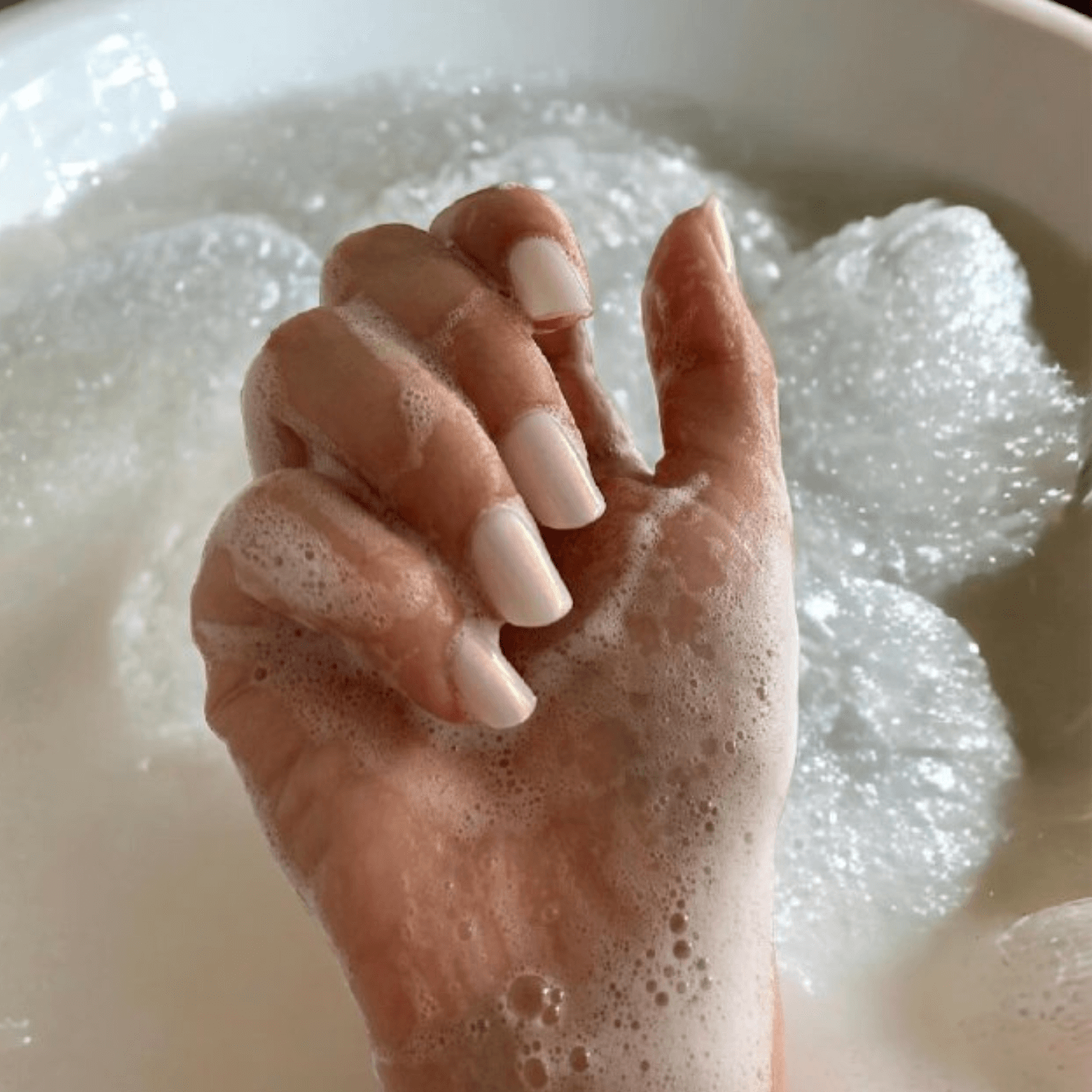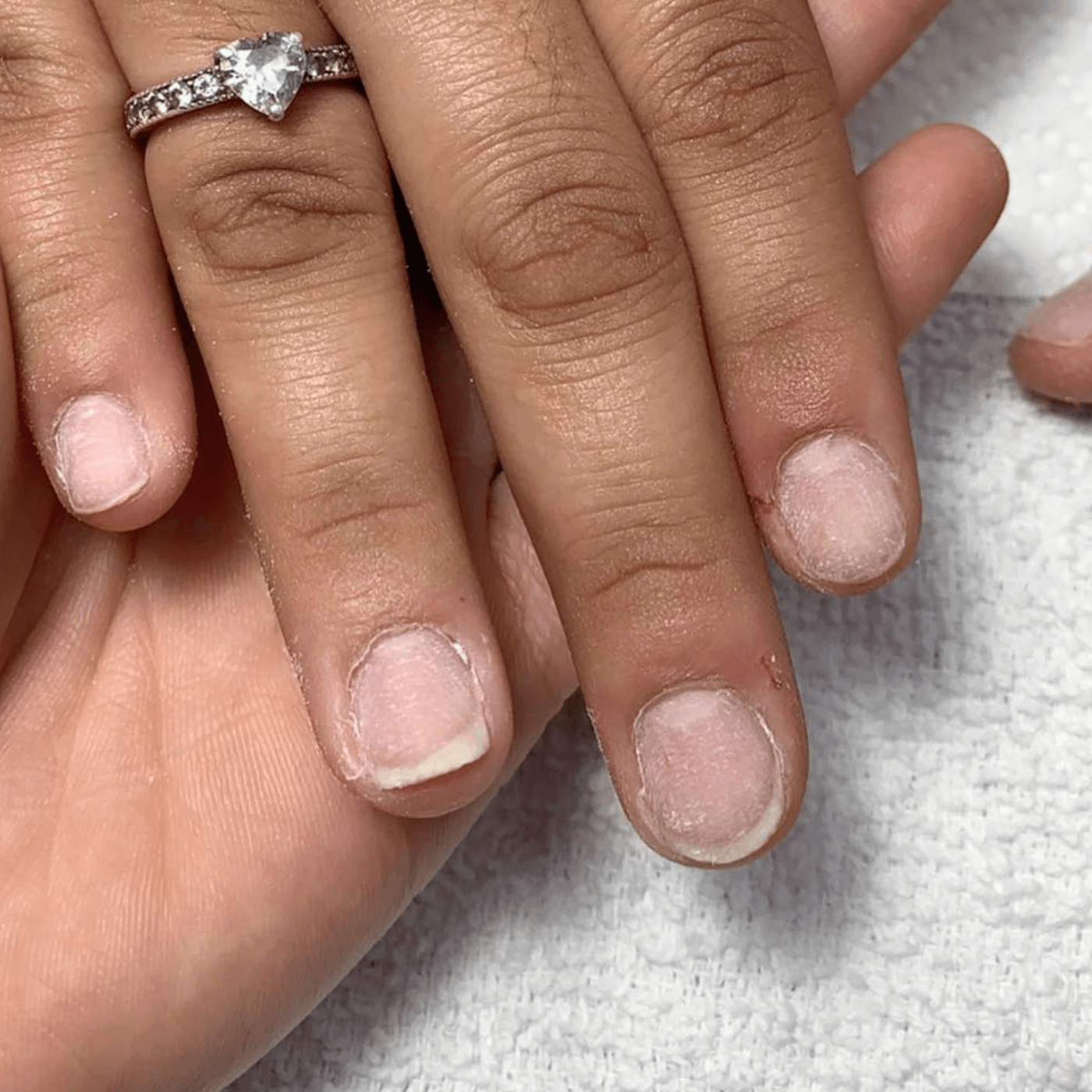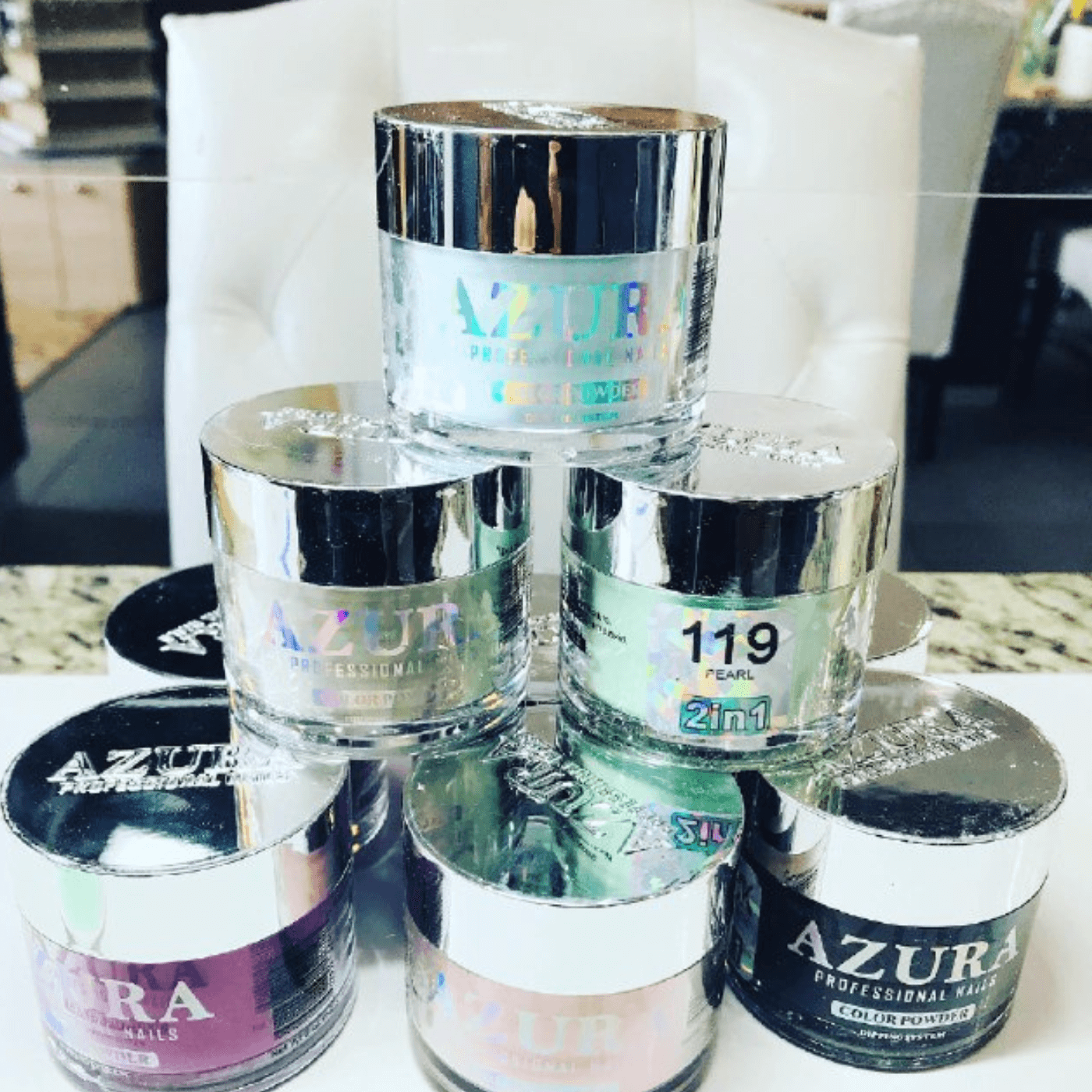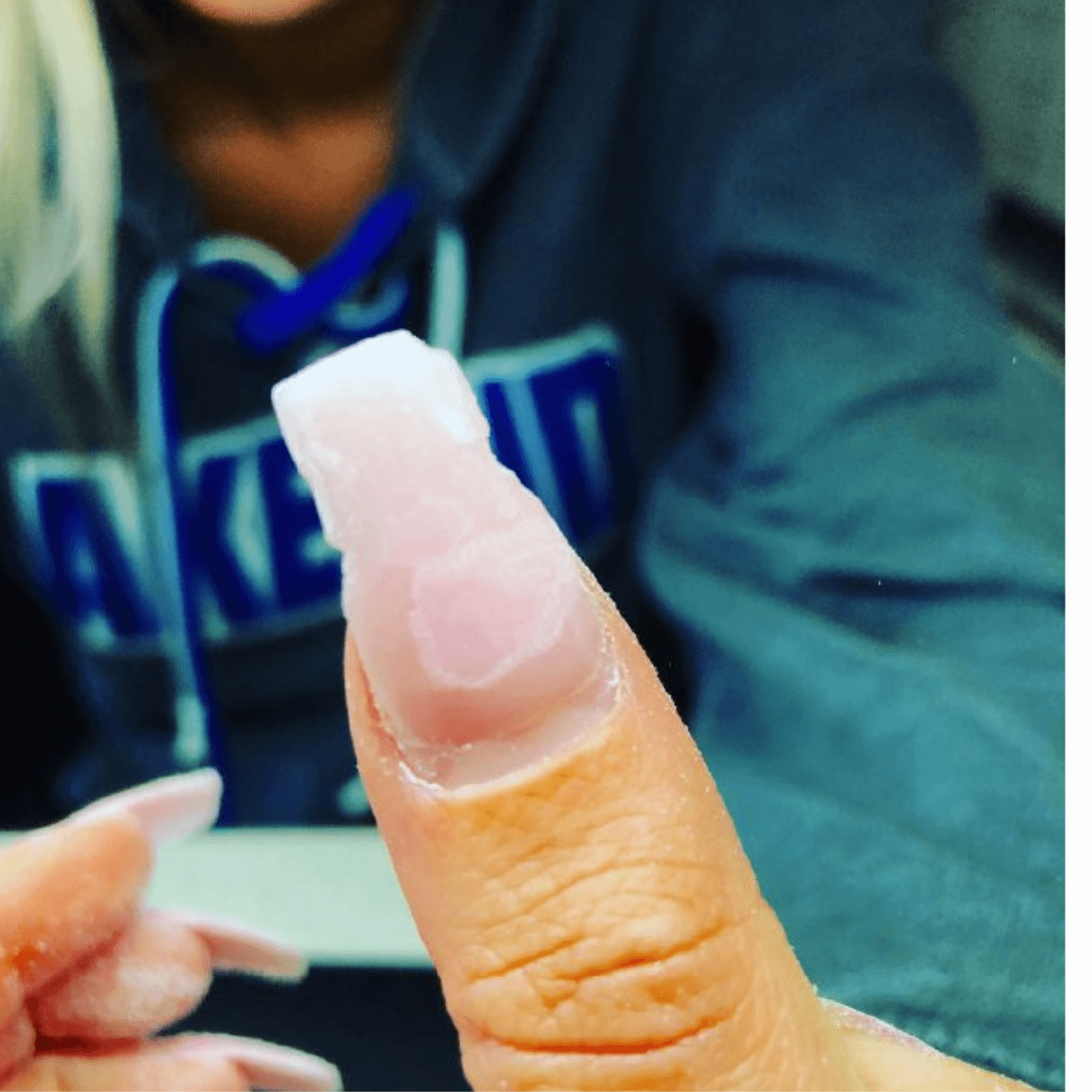The Risks of a Manicure: What You Need to Know Before Your Next Appointment
Posted on Oct 2, 2024
A manicure can be a fantastic way to treat yourself—fresh nails, a bit of relaxation, and a polished look to show off. However, it’s important to be aware of the potential risks of a manicure so you can stay safe and enjoy the experience without any surprises. While most manicures are perfectly safe, issues like infections, nail damage, and allergic reactions can occur if proper care isn’t taken. So, before you book your next appointment, let’s break down some common risks and how to avoid them.
Whether you’re visiting your regular nail artist or trying out a new salon, being informed about these risks can help you protect your nail health while still enjoying your favorite beauty treatment.
Jump to the Section You Like
Risk of Infection

Belliata Rose Couture Nail Bar - Prosper Prosper, TX
View on Instagram
One of the biggest risks of a manicure is infection, especially if the tools used aren’t properly sanitized. Dirty or poorly maintained tools can introduce bacteria, viruses, and fungi into the skin around your nails. This risk is even higher if your nail artist cuts your cuticles too deep, leaving open wounds that are more vulnerable to bacteria. Infections can range from minor irritations to more serious issues like staph infections or even viral infections such as warts.
Tip: Always check that your nail artist is using sterilized or disposable tools. It’s completely fine to ask how they clean their tools—your safety should be a priority.
Nail Damage and Over-Filing

Belliata Artisan Nail Lounge Memphis
View on Instagram
Over-filing is a common issue in manicures, especially with acrylic or gel nails. Filing too aggressively can weaken the natural nail, making it prone to breakage, splitting, or even lifting from the nail bed. This not only affects the appearance of your nails but can lead to long-term damage if done repeatedly.
In addition to over-filing, cutting cuticles too harshly can damage the skin, leading to painful cuts, infections, or permanent changes to your cuticle area.
Tip: Be cautious of over-buffing or filing. It’s okay to ask your nail artist to be gentle or to skip aggressive cuticle trimming if it makes you uncomfortable.
Fungal Infections

Belliata Dream nails bar Kingsport
View on Instagram
Although more commonly associated with pedicures, fungal infections can also occur with manicures, especially if the tools or nail polish brushes are not cleaned properly. Fungi can be transferred from one client to another, leading to infections that affect both your nails and the surrounding skin. The risk is particularly high if the salon reuses nail polish or brushes between clients without cleaning them.
Tip: You can ask your nail artist to use a fresh or personal bottle of nail polish, especially if you have sensitive nails or are prone to fungal infections.
Allergic Reactions to Products

Belliata Blush Nail & Spa Chattanooga
View on Instagram
With all the different products used during a manicure—nail polish, removers, gels, acrylics, lotions—there’s a chance you could experience an allergic reaction. Some ingredients in nail polish or gel products can cause skin irritation, redness, or even swelling around your nails. People with sensitive skin or specific allergies need to be especially cautious.
Tip: If you know you have sensitive skin or allergies to certain chemicals, inform your nail artist ahead of time. You can also bring your own products to reduce the risk.
Hygiene Concerns

Belliata Nt Nails & Spa Jonesborough
View on Instagram
A salon’s hygiene practices are critical when it comes to the safety of your manicure. If the salon isn’t properly sanitizing their tools or cleaning their workstations between clients, the risk of infections or skin irritation increases significantly. Poor hygiene can lead to bacterial or fungal infections, so always make sure the salon follows proper protocols.
Tip: Look for salons with visible sanitation practices, such as sterilizing tools, using fresh towels, and wiping down surfaces regularly. If something seems off, it’s okay to choose a different salon.
How to Minimize the Risks of a Bad Manicure
While there are risks involved in getting a manicure, the good news is that you can reduce these risks by taking a few simple precautions:
- Choose a reputable salon: Check reviews and ask friends for recommendations to find a nail salon with good hygiene and professional staff.
- Bring your own tools: To minimize the risk of infection, you can bring your own sterilized nail clippers, files, and buffers to your appointment.
- Speak up: If your nail artist is being too aggressive with filing or cutting, don’t hesitate to ask them to be gentler or stop altogether.
- Avoid damaged nails: If your nails are already weak or damaged, it might be best to skip harsh treatments like acrylics or gels until they’ve had time to recover.
Recommendations
Manicures can be a wonderful way to pamper yourself, but it’s essential to stay aware of the risks of a manicure to keep your nails and skin healthy. Choosing a reputable salon, ensuring good hygiene practices, and communicating with your nail artist are all key steps to ensuring a safe and enjoyable experience. With these precautions, you can relax and enjoy your next manicure while keeping your nails in top shape!
Citations
Nail anatomy
https://www.sciencedirect.com/science/
Finger nail plate shape and size for personal identification – a possible low technology method for the developing world - Preliminary report
https://www.ajol.info/index.php/ajhs/article/view/30795
Physics of nail conditions: why do ingrown nails always happen in the big toes?
https://iopscience.iop.org/article/

Tabio
Tabio is a writer with a focus on podiatry and foot care. Their passion lies in translating complex medical knowledge into clear, accessible articles. Tabio's expertise covers everything from at-home foot care routines to the latest advancements in podiatric treatments. When not writing, Tabio stays on top of healthy living trends, ensuring their readers receive well-rounded advice for maintaining overall foot health and well-being.

